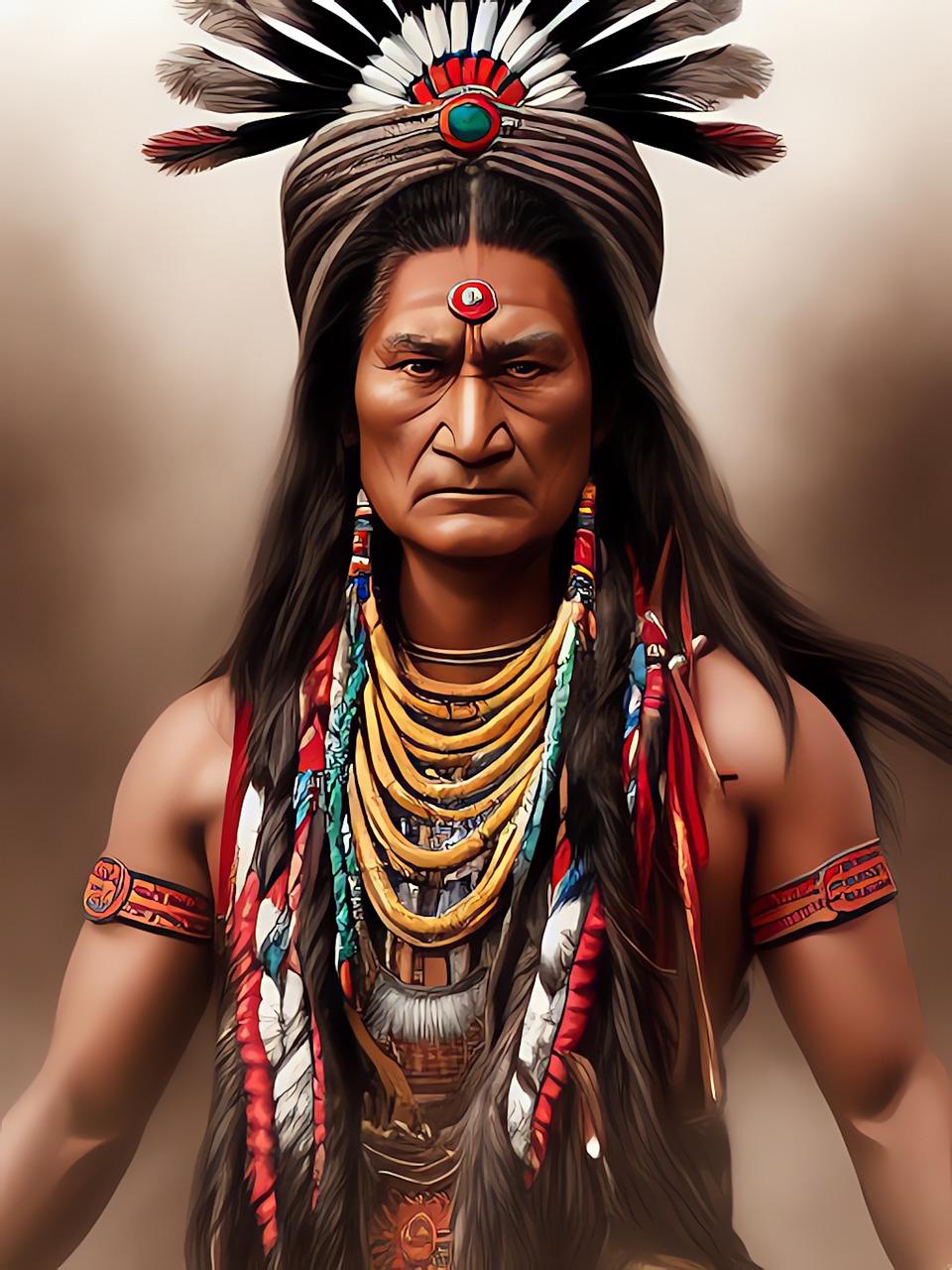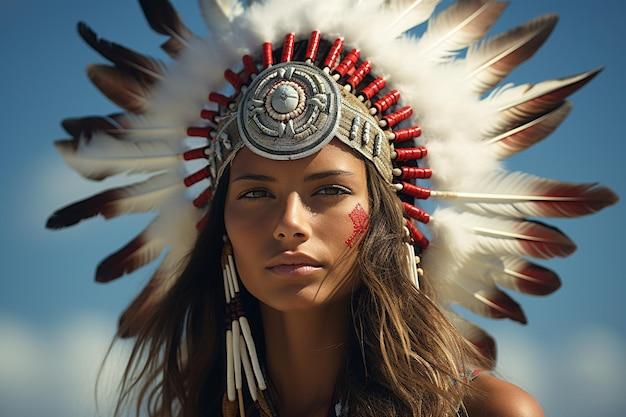For centuries, Native American tribes thrived across the vast landscapes of what is now known as the United States. Their cultures, traditions, and way of life were deeply intertwined with the land they inhabited. However, as European settlers encroached upon Native American territories, conflicts arose, resulting in the subjugation and displacement of many tribes.
In this blog post, we delve into the captivating tale of the last Native American tribe to surrender. We explore the historical context, key figures, and pivotal events that led to this momentous event. From the significance of the Apache tribe in Native American history to the daring exploits of legendary figures like Geronimo and Chief Crazy Horse, we unveil the remarkable resilience of these indigenous peoples.
Join us on an enlightening journey as we uncover the final chapter of Native American resistance and shed light on the enduring legacy of these tribes. Discover the answers to intriguing questions such as the connection between Apaches and Comanches, the existence of modern-day Apache communities, and much more. Let’s delve into this captivating piece of history and unravel the stories of bravery, survival, and cultural identity that define the Native American experience.

What Was the Last Native American Tribe to Surrender?
The question of the last Native American tribe to surrender is one that triggers a deep dive into the often misunderstood and tragic history of indigenous peoples in the United States. Prepare to journey through time as we uncover the final chapter in this tale of resilience and hardship.
The Drum Beats of Defiance Fade
As the 19th century drew to a close, the echoes of Native American resistance began to wane. The drum beats of defiance, once thunderous across the pristine American landscapes, gave way to the somber tunes of surrender. Yet, hidden within these haunting melodies lies a story of strength and survival.
A Battle-Hardened People
Though countless tribes valiantly fought against the encroachment of settlers, disease, and forced relocation, the Apache people emerged as one of the last tribes to surrender. Led by legendary figures such as Geronimo, they fiercely defended their ancestral lands in the arid regions of the Southwest.
The End of an Era
In the pale light of a fateful day in 1886, the weary warriors of the Apache tribe laid down their arms. Geronimo, the indomitable leader who had eluded the grasp of the U.S. military for years, finally surrendered, ending a decades-long campaign of resistance. This surrender marked the closure of a tumultuous era for Native American tribes, forever altering the tapestry of their existence.
Tracing the Legacy
Even in surrender, the Apache people left an indelible mark on the annals of American history. Their stories of bravery and resilience continue to inspire and educate generations, ensuring that the memory of their struggles and sacrifices will never be forgotten. Today, Apache tribes persist, weaving their traditions and cultural heritage into the fabric of a modern world.
Honoring the Past, Embracing the Future
As we reflect upon the question of the last Native American tribe to surrender, it is a reminder of the resilience of the human spirit. The wounds of the past may still ache, but through understanding and acknowledgment, we can begin to heal. Let us walk together, hand in hand, as we embrace a future that honors the rich tapestry of Native American tradition and seeks reconciliation for the injustices of the past.
Forever in our Hearts
So, as the drum beats fade, let us remember the courage and tenacity of the Apache people and the countless tribes who fought to protect their way of life. Their legacy lives on, woven into the very fabric of our nation. May we honor their memory, uplift their voices, and work towards creating a future where respect, understanding, and equality prevail.
Remember, while history may have its solemn moments, a touch of humor can remind us of our shared humanity even in the face of adversity. As we bid farewell to the last Native American tribe to surrender, let us take courage in the timeless words of Mark Twain, who once said, “The secret source of humor itself is not joy but sorrow.”
This blog post is not an ethereal work of fiction but rather an introduction to the historical event of the last Native American tribe to surrender. The details provided are accurate to the best of our knowledge and based on historical records.

FAQs About the Last Native American Tribe to Surrender
What does “Chiricahua” mean in Apache
“Chiricahua” is derived from the Apache language and translates to “great mountain” or “mountain pass.” This name was given to a Native American tribe that inhabited the southwestern United States.
What was the last American Indian tribe to surrender
The last Native American tribe to surrender was the Chiricahua Apache tribe. After years of resisting colonization and fighting against the encroachment of their homeland, the Chiricahua Apache tribe finally surrendered to the United States government in 1886.
Was Geronimo the last Indian to surrender
While Geronimo is one of the most well-known leaders of the Chiricahua Apache tribe, he was not the last Native American to surrender. After Geronimo’s surrender in 1886, there were still members of the tribe who continued to resist. However, by 1887, the remaining Chiricahua Apache people were forced to surrender, marking the end of their resistance.
Are there any Comanches left
Yes, there are still Comanches today. Although the Comanche tribe faced immense challenges during the colonization of their lands, they persevered and have managed to maintain their cultural identity and presence. However, like many Native American tribes, their population has significantly decreased over the years.
Who was the bravest Native American
It is difficult to pinpoint one individual as the “bravest” Native American, as bravery is subjective and can be demonstrated in various ways. Many Native American leaders, such as Sitting Bull, Crazy Horse, and Chief Joseph, are celebrated for their courage and resilience in the face of adversity.
When was the last wild Indian
The term “wild Indian” is derogatory and perpetuates negative stereotypes about Native Americans. It is crucial to recognize that Native American people are diverse and have their own distinct cultures, histories, and ways of life. Referring to them as “wild” oversimplifies their rich heritage.
Do the Apache still exist
Yes, the Apache people still exist today. They have not only survived centuries of colonization and forced assimilation but have also managed to preserve their cultural traditions and language. Apache communities can be found in various regions, including Arizona, New Mexico, and Oklahoma.
Are Apaches and Comanches related
No, the Apache and Comanche tribes are not closely related. While both tribes are indigenous to North America and share some cultural similarities, they belong to distinct language groups. The Apache people are part of the Athabaskan language family, while the Comanche people belong to the Uto-Aztecan language family.
When was the last Indian tribe defeated
It is essential to note that Native American tribes were not defeated by a single event or on a specific date. The colonization and conquest of Native lands spanned several centuries, with different tribes experiencing varying degrees of conflict and dispossession at different times. The process of colonization was complex and involved numerous battles, treaties, and policies.
Did Apaches fight Comanches
While there were instances of conflict between Apache and Comanche tribes, it is important to recognize that intertribal relationships were not solely defined by warfare. Native American tribes had complex relationships that involved trade, alliances, and cultural exchanges. While conflicts did occur, it is also crucial to acknowledge the diverse histories and interactions between different tribes.
What tribe was Chief Crazy Horse from
Chief Crazy Horse was a member of the Oglala Lakota Sioux tribe. He played a significant role in resisting the encroachment of Native lands and defending the way of life of the Lakota people. Crazy Horse is widely remembered for his leadership and military prowess, particularly during the Battle of Little Bighorn.
When did the last Native American surrender
It is not accurate to assign a specific date to the last Native American surrender, as the colonization of Native lands involved numerous tribes and occurred over several centuries. Native American resistance and efforts to preserve their cultures, lands, and sovereignty continue to this day.
When were the Apaches defeated
The Apaches were not defeated in a single decisive battle or on a specific date. The conflict between the Apache people and European colonizers spanned several centuries, with periods of resistance, treaties, forced relocations, and assimilation policies. The Apache people and their history cannot be simplified to a single moment of defeat.
What Native American tribes never surrendered
While many Native American tribes faced colonization and forcible transfers of their lands, it is important to highlight that resistance and non-surrender were not exclusive to a specific tribe. Various tribes, such as the Lakota Sioux, Cheyenne, and Apache, among others, demonstrated resilience and tenacity in protecting their way of life. Native American resistance took different forms, including armed conflicts and legal battles.
Which Native American tribes were cannibals
The notion of “cannibalistic Native American tribes” is a myth and a stereotype perpetuated by early European settlers. There is no evidence to support the claim that any Native American tribe practiced widespread cannibalism. It is crucial to approach Native American history with respect and avoid perpetuating harmful stereotypes.
Who was the most feared Indian Chief of All Time
Native American tribes had numerous respected and influential leaders throughout history. Singling out one chief as the “most feared” overlooks the complexities and diverse leadership styles within Native American cultures. Leaders such as Tecumseh, Crazy Horse, and Sitting Bull are often celebrated for their military successes and determination.
Are Navajo and Apache the same
No, the Navajo and Apache tribes are distinct and belong to different linguistic groups. The Navajo people are part of the Athabaskan language family, while the Apache people belong to the Southern Athabaskan language family. While there may be cultural and historical connections between tribes in the same region, each tribe has its own unique identity.
When was the last Indian raid
The term “Indian raid” perpetuates a one-sided and derogatory narrative. Native American tribes engaged in various forms of conflict and resistance, and historical events cannot be simply labeled as “raids.” It is essential to approach indigenous histories with cultural sensitivity and avoid using terminology that reinforces stereotypes.
When did the Comanche tribe surrender
The Comanche tribe did not surrender as an entire entity. Similar to other Native American tribes, the Comanche people faced immense challenges during the colonization of their lands. However, their resistance was not limited to a single event or moment of surrender. Today, the Comanche people continue to maintain their cultural identity and presence.
Are Apaches Mexican
No, the Apache people are not Mexican. The Apache tribes originated in North America long before the establishment of modern national boundaries. While some Apache communities are located in present-day Mexico, it is crucial to recognize that indigenous peoples have unique histories and identities that are not defined by modern geopolitical borders.